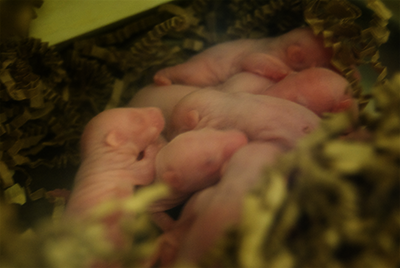Difference between revisions of "Team:SDU-Denmark/Tour10"
| Line 27: | Line 27: | ||
<span class="intro">Monoclonal antibodies (mAbs) are extensively used in scientific and fundamental medical research</span>. | <span class="intro">Monoclonal antibodies (mAbs) are extensively used in scientific and fundamental medical research</span>. | ||
| − | The nowadays production methods of mAbs are not only time-consuming and costly but also at the expense of animal lives. Antibodies have many applications in research, diagnostics and show great promise in treatment of cancer. But the advancement is held back due to the expensive and time consuming production. Therefore we propose an alternative to antibodies; peptide aptamers – produced in <i>Escherichia coli</i> (<i>E. coli</i>). The variable loop of the peptide aptamer is generated through a random nucleotide library and held together by an optimized, enzymatic inactive version of human Thioredoxin (hTrx) used as a scaffold protein. We are using the bacterial two-hybrid system to generate and at the same time screen for | + | The nowadays production methods of mAbs are not only time-consuming and costly but also at the expense of animal lives. Antibodies have many applications in research, diagnostics and show great promise in treatment of cancer. But the advancement is held back due to the expensive and time consuming production. Therefore we propose an alternative to antibodies; peptide aptamers – produced in <i>Escherichia coli</i> (<i>E. coli</i>). The variable loop of the peptide aptamer is generated through a random nucleotide library and held together by an optimized, enzymatic inactive version of human Thioredoxin (hTrx) used as a scaffold protein. We are using the bacterial two-hybrid system to generate and, at the same time screen for peptide aptamers with affinity for a protein of interest. Additionally we are proposing a production model. |
</p> | </p> | ||
| Line 34: | Line 34: | ||
<p> | <p> | ||
| − | <span class="intro">Our team consists</span> of nine students from five different educations; philosophy, chemical engineering, biochemistry and molecular biology, biomedicine and medicine. During the last 6 months we have laughed, cried, built friendships and overcome a lot of struggles together. In the end of the day it has been a whole lot of fun! To guide and help us through the journey we have had our four supervisors. Go to the next page <a href="https://2015.igem.org/Team:SDU-Denmark/Tour11">the team</a> and dig deeper into the members of the SDU Denmark 2015 iGEM team. | + | <span class="intro">Our team consists</span> of nine students from five different educations; philosophy, chemical engineering, biochemistry and molecular biology, biomedicine and medicine. During the last 6 months we have laughed, cried, built friendships and overcome a lot of struggles together. In the end of the day it has been a whole lot of fun! To guide and help us through the journey, we have had our four supervisors. Go to the next page <a href="https://2015.igem.org/Team:SDU-Denmark/Tour11">the team</a> and dig deeper into the members of the SDU Denmark 2015 iGEM team. |
<br> | <br> | ||
Revision as of 00:08, 19 September 2015
"Change is the law of life and those who look only to the past or present are certain to miss the future." - John F. Kennedy
Project description
Monoclonal antibodies (mAbs) are extensively used in scientific and fundamental medical research. The nowadays production methods of mAbs are not only time-consuming and costly but also at the expense of animal lives. Antibodies have many applications in research, diagnostics and show great promise in treatment of cancer. But the advancement is held back due to the expensive and time consuming production. Therefore we propose an alternative to antibodies; peptide aptamers – produced in Escherichia coli (E. coli). The variable loop of the peptide aptamer is generated through a random nucleotide library and held together by an optimized, enzymatic inactive version of human Thioredoxin (hTrx) used as a scaffold protein. We are using the bacterial two-hybrid system to generate and, at the same time screen for peptide aptamers with affinity for a protein of interest. Additionally we are proposing a production model.
Our team consists of nine students from five different educations; philosophy, chemical engineering, biochemistry and molecular biology, biomedicine and medicine. During the last 6 months we have laughed, cried, built friendships and overcome a lot of struggles together. In the end of the day it has been a whole lot of fun! To guide and help us through the journey, we have had our four supervisors. Go to the next page the team and dig deeper into the members of the SDU Denmark 2015 iGEM team.

